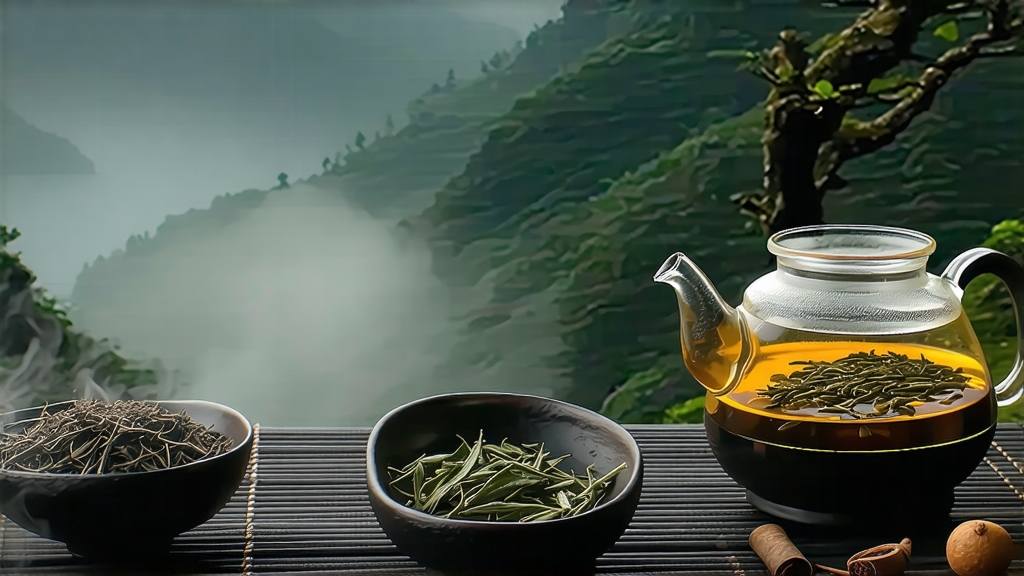
Long before English tea clippers raced across the oceans and Victorian drawing rooms echoed with the clink of porcelain, a small village in the Wuyi Mountains of northern Fujian province was already perfuming the air with the scent of smoldering pine. That village—Tongmu Guan—gave the world its first fully oxidized leaf, the original black tea, known in China as “Zheng Shan Xiao Zhong” and celebrated abroad as Lapsang Souchong. To understand this tea is to hold a compass that points backward through five centuries of global trade, imperial ambition, and the quiet ingenuity of Chinese tea masters who turned accident into artistry.
Historical records kept by the Jianyang county gazetteer mention “smoked small-leaf tea” as early as 1567, but the story most farmers still tell around the cast-iron woks begins in 1646. Qing troops, the tale goes, were marching toward the Wuyi passes; villagers, hurrying to dry freshly picked leaves before the soldiers arrived, lit fires of fresh pine to speed the process. The resulting tea—dark, glossy, and laced with the resinous sweetness of resin—was considered ruined until Dutch traders on the coast tasted it and paid twice the price of their usual green tea. Within decades, bohea (the Fujianese pronunciation of “Wuyi”) became the most valuable cargo of the East India Companies, and Lapsang Souchong, its noblest grade, the first black tea Europe ever knew.
Strictly speaking, only leaf plucked inside the 600-meter contour line of Tongmu Guan’s granite gorges may be called Zheng Shan (“original mountain”) Xiao Zhong. Outside that core, the same cultivar—usually a small-leaf Camellia sinensis var. sinensis known locally as cai cha—yields Waishan (“outside mountain”) Xiao Zhong, still delicious but lacking the subtle mineral coolness imparted by the gorge’s mist and the sweet resin of Masson pines that grow nowhere else. Purists therefore divide Lapsang into two stylistic families: the traditional pine-smoked and the newer unsmoked “wild” version, the latter dried only with bamboo baskets over charcoal and favored by Chinese connoisseurs who want the natural fruit and honey notes without campfire aromatics.
Plucking begins on the first clear morning after Qingming, when two leaves and a bud stand erect like miniature spearheads. The goal is a balance of polyphenols: too early and the leaf is thin, too late and astringency dominates. Once bamboo baskets are filled, the maocha (“rough tea”) undergoes a twelve-step journey that has changed little since the Ming. Withering takes place on bamboo racks set into the second floor of two-hundred-year-old wooden houses; windows are cracked open so that cool canyon air can skate across the leaf, driving off moisture while concentrating sugars. Every forty minutes the tea is gently rocked by hand, a movement known as wei diao that bruises the edges just enough to invite oxygen. When the leaf feels as supple as fine leather, it is rolled—first by machine, then by hand—until tight twists exude a grassy perfume that signals the onset of oxidation.
Here the path forks. For classic pine-smoked Lapsang, the oxidized leaf is spread in shallow bamboo trays and suspended over a pit of smoldering long-rooted pine. The fire is never allowed to flame; instead, fresh resinous sawdust is sprinkled every twenty minutes, maintaining a temperature of 80 °C and bathing the leaf in a cloud of sweet smoke. This stage, called xun pei, lasts six to eight hours and must be tended through the night. By dawn the leaf has turned an inky black with a glossy lacquer sheen; its moisture has fallen to 5 %, and the smoke has bonded to the leaf’s surface polyphenols, creating the signature aroma chemists describe as a marriage of guaiacol, syringol, and trans-2-hexenal. The unsmoked style, by contrast, is dried in wicker baskets over a gentle charcoal heat derived from bamboo and hardwood; the absence of pine allows the cultivar’s natural lychee and longan aromatics to dominate.
Sorting follows: women seated at bamboo tables flick defective stems through the air like card sharps, retaining only the slender, jet-black twists that will unfurl into whole leaves